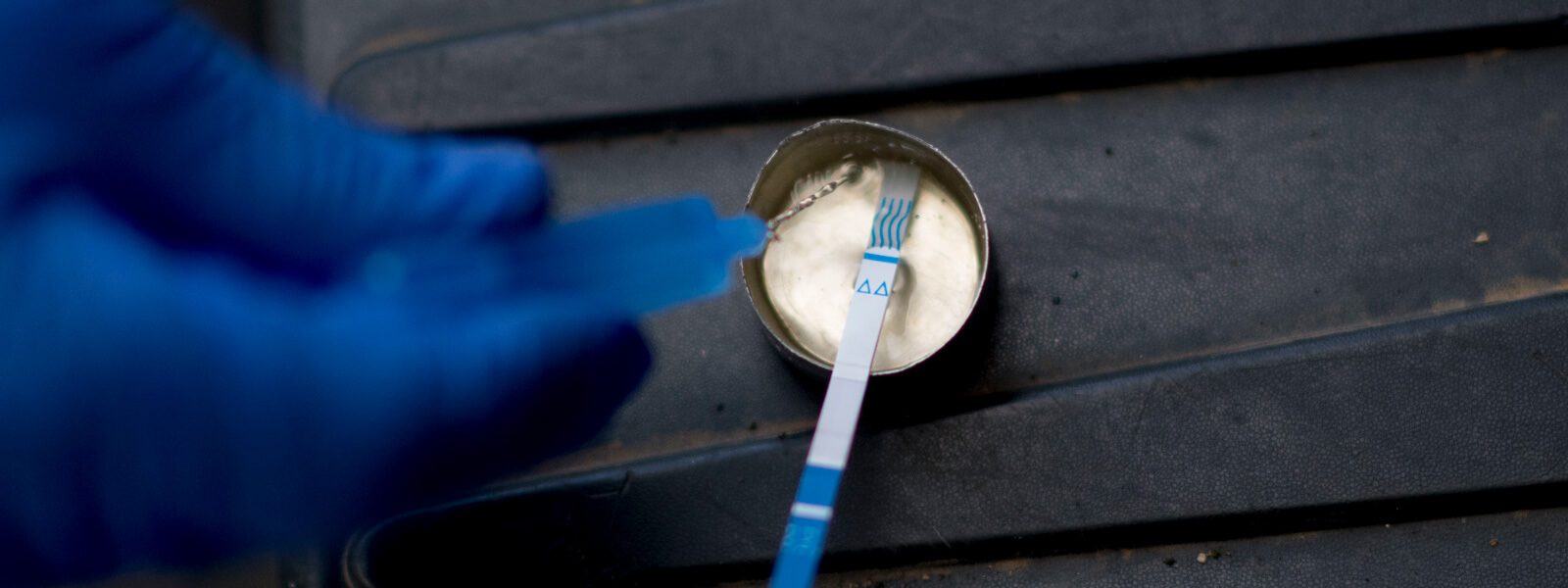
15 Feb End of Heroin is Bad News for US Fentanyl Hotbeds
On October 22, 2018, authorities pulled over a Dominican national identifying himself as Angel Javier Morell-Oneill as he drove in Methuen, Massachusetts. They had been investigating him since June 2018, according to a Justice Department press release. They searched his car and found two kilograms of fentanyl in the passenger seat.
The find was troubling but not unexpected. Fentanyl use in the northeast tops the nation, according to data collected by counterdrug authorities. (See graphic below) And fentanyl has become a drug of choice, which led to near 30,000 overdose deaths in 2017.
This article is part of a series on the growing demand for fentanyl and its deadly consequences done with the support of the Mexico Institute at the Woodrow Wilson International Center for Scholars. See the rest of the series here.
On this occasion, authorities also executed a warrant to search Morell-Oneill’s apartment on Pleasant Valley Street, Methuen, where they found another 30 kilograms of fentanyl, most of it wrapped in one kilogram-sized packages and hidden throughout the apartment. The drugs, the Justice Department said, were worth an estimated $29 million. In addition, they found a 9mm Millennium G2 handgun, ammunition, and a gas mask.
 While surveilling the apartment, authorities also observed and arrested José Rodríguez, when he arrived with $20,000—what US prosecutors say was “half of the transportation costs of a narcotics shipment” to Morell-Oneill.
While surveilling the apartment, authorities also observed and arrested José Rodríguez, when he arrived with $20,000—what US prosecutors say was “half of the transportation costs of a narcotics shipment” to Morell-Oneill.
The pair are part of a slew of Dominican nationals who are spread throughout the Northeast, increasingly in small towns like Methuen, population 50,000, and Lawrence, population 80,000, which one DEA officer described as the “epicenter” of fentanyl distribution where Dominicans come in using false IDs as Morrell-Oneill did. “They own the land,” the officer told InSight Crime of the Dominicans.

The officer said the Dominican networks use a rudimentary process—magic bullet blenders, an industrial strength air purifier, and “narcan,” the naloxone used to counteract effects of an opioid overdose—to lace heroin with fentanyl or simply eliminate the heroin altogether, since the fentanyl is so strong. “Pretty soon, you will stop hearing about heroin,” he said. “They’re never going back to heroin.”
To be sure, these days it is increasingly more common for fentanyl to be mixed with adulterants and sold as heroin, with no heroin present in the product. This observation is backed up by the NFLIS data which shows fentanyl-only exhibits far outstripped heroin cut with fentanyl exhibits in 2016.

Interviews with local law enforcement and public health officials in these regions for our investigation into fentanyl-trafficking networks suggest that fentanyl-family substances have become a dominant and unique substance in local opioid markets, and that criminal groups are also strategically cutting it into ascendant local prescription pill, cocaine, and methamphetamine markets to create a larger opioid and fentanyl dependent population.
“Fentanyl is being used to lace a wide variety of drugs, including marijuana, and because of the [high] addictiveness of…something like fentanyl, you will rapidly become dependent on that drug. And then that leads you to crave it, even though you don’t know it is the opioid, you’ll crave the drug you had that sensation with,” Dr. Nora Volkow, the Director of the National Institute of Drug Abuse, said at a recent conference organized by Politico.
This view is echoed by a local law enforcement official in Hamilton County, Ohio.
“Half of the methamphetamine and crack cocaine overdoses [in Hamilton County] have had fentanyl in them,” the official told InSight Crime. “Synthetic opiates are the money-makers for most of the cartels since it is what most people are addicted to and you can hit different demographics by starting to mix fentanyl with cocaine and methamphetamine.”
Notably, according to the 2018 National Drug Threat Assessment, it is the criminal wholesalers in the US, and not Mexico, who appear to be lacing the drugs in the US with fentanyl.
“Although fentanyl is often seized as a part of poly-drug loads (generally cocaine, heroin, and methamphetamine), fentanyl mixtures with other illicit drugs are very uncommon at the wholesale level,” the DEA wrote. “This indicates the mixing of fentanyl with other illicit drugs is most frequently done inside the United States and is not representative of any definitive Mexican TCO strategy.”
Still, the Mexican groups have taken note of the widening use of the drug, authorities say. A kilo of fentanyl can yield as much as $1.3 million, while a kilo of heroin might yield $75,000, the DEA agent in New England said.
Given the profit margins, Mexican organizations may be moving into the wholesale business in the Northeast United States, both the DEA and US prosecutors say. Authorities are worried that a violent power struggle has already begun. “We know who is going to win that fight,” a US prosecutor said, referring to the firepower of the Mexican groups.
This article is part of a series on the growing demand for fentanyl and its deadly consequences done with the support of the Mexico Institute at the Woodrow Wilson International Center for Scholars. See the rest of the series here.

[ad_2]
Source link



No Comments